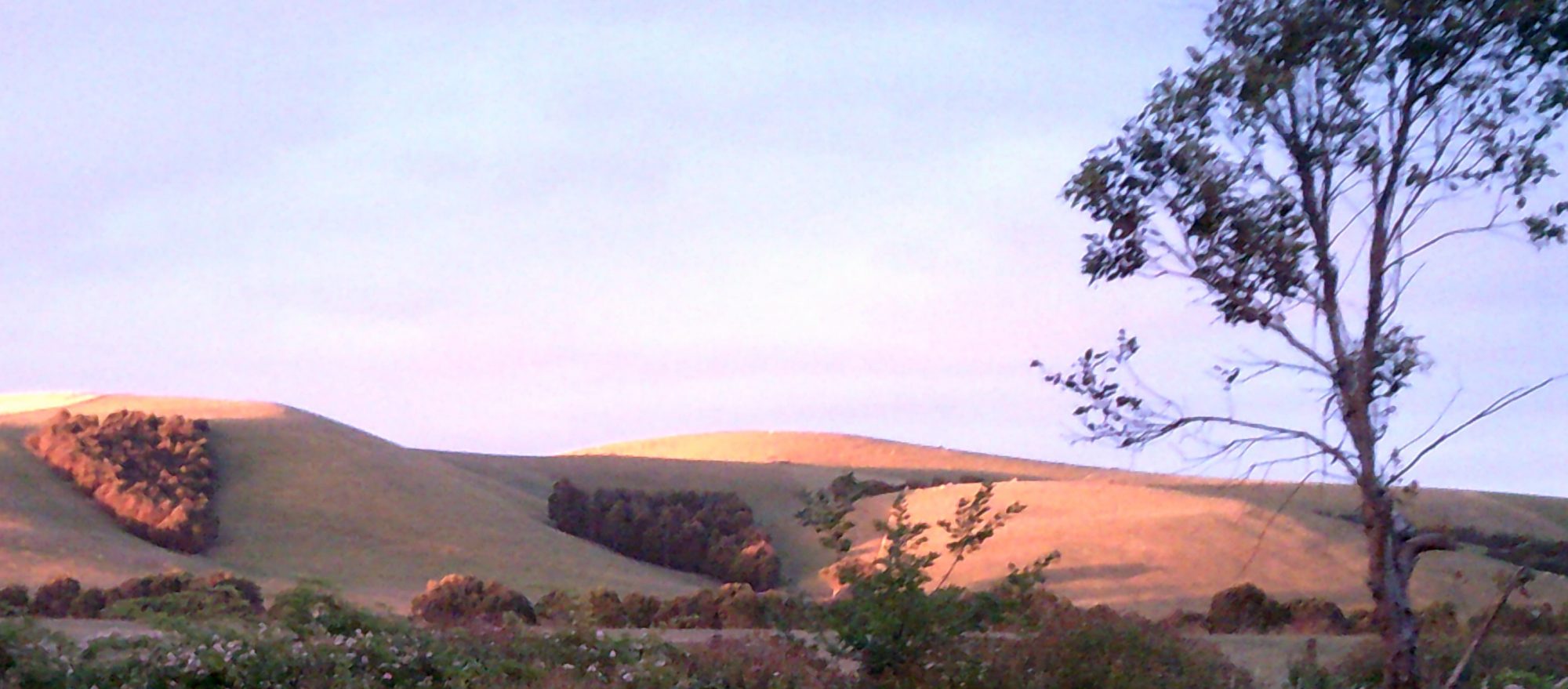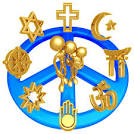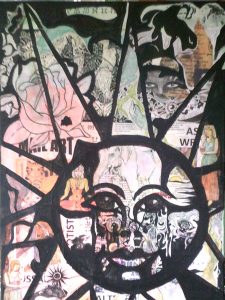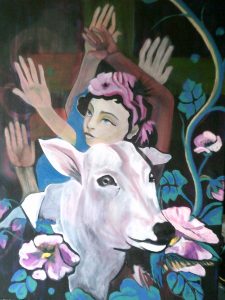
There is a wonderful exhibition of work executed by pupils of the Foster Secondary College currently showing at the Stockyard Gallery, which I believe has generated many positive responses, but also some negative ones. While I would normally ignore negative views putting them down to individual taste, I do believe this exhibition has raised some important issues that need to be addressed.
First, when one walks into the art show the senses are overcome by the colour, joy, excitement and a propensity to display youthful enthusiasm in the production of expressionist art. What is on offer is an intense parody of love, vision, ingenuity, creativity, originality, imagination, inspiration and inclusiveness. Everything about this exhibition demonstrates a proclivity to focus on all that is good in the world using a cleaver combination of semiotics (language, symbols and forms) to convey hope for the future.
The student exhibition reveals much about the optimism of young people faced with a world that is generally perceived as irretrievably troubled and wrought with pain and despair. That said, not everyone can rise above the troubles with such enthusiasm and these voices need to be heard. What impressed me about the show is the clear juxtaposition of an affirmative worldview and a small collection of despairing minds that should not be viewed negatively, but as an opportunity to demonstrate the possibilities of confident and constructive healing. The honesty and integrity of students who have had a predilection to suffering and despair is testimony to the healing potentials of creativity.
What disturbs me is the perception amidst some people that the education system is misguided in encouraging freedom of expression when it comes to identifying difference. It is a view that heralds the all too vocal belief that students should be learning literacy, numeracy and the sciences over social and personal development, togetherness, trust and wellbeing.
Back in 2015 when the Wellington Shire Council along with Mental Health Services and Anglicare conducted their survey of mental health issues in Gippsland it was found that one in four young people experienced some form of mental dysfunction. The overall statistics show Gippsland to have one of the highest rates of suicide in Victoria, which if ignored can be the fateful outcome of mental disorders, especially when the feeling of being ostracised from the community is not taken seriously.
There has been a consistent effort to improve the public understanding of mental breakdown and what has been gleaned from the research is the earlier a problem is dealt with the better the outcome. In order to improve the outcome(s) the entire community needs to have a serious conversation, not about other people, not about the education system, not about what anyone might judge as good, bad or inappropriate art, but about ourselves. In other words, what are we all doing to improve our mental health? Further, how can we all contribute to a mentally healthy and stable community?
We live in a stressful and unpredictable world and if anyone feels they are not impacted by the uncertainty of worldly dilemmas they are lying to themselves. It begs the question; how can we avert the consequences of an adverse global environment? We criticise it, we protest over it, we make judgements, which only make us feel more powerless and poorer about ourselves and others. We have to live in a global system that is always changing and there are better ways of dealing with the problems, particularly at a local level.
Over my adult lifetime I have given considerable thought to the state of the world and most of my work has been devoted to people who struggle with it. Allow me to be bold and share with you what I have learned. Life will always be a struggle, but how we deal with it determines who we are and whether we are happy and confident or bitter, antagonist and miserable.
We are the sum total of our thoughts and all of our thoughts stem from memories. Some recollections we can access, most we have forgotten. Those issues we don’t want to confront because they are too embarrassing or painful get projected onto the world and they can have an impact on other people; possibly a group, even a state or a nation; or seemingly a local art show. Whatever it is that triggers the internal discomfort will be vented on the external world unless we intervene in our personal processes. Repressed memories cause anxiety, pain and illness, which are often contagious. There is good news; we have a way out of the negative judgements and it begins by calling it out.
Our brains are structured by the language we learn though our early development and over a lifetime. To put it simply, this language creates pathways in the brain which we use to project who we are onto the world. However, what we appear to be thinking; is often an example of not thinking clearly. The brain is often thinking for itself using old and unsuitable data.
Consider this, you are driving a car to work in the morning and navigating the road. You are on a road you travel along every day so you don’t have think about where you are going or where the turn off might be; you just turn when you have to. Your brain is on automatic pilot because it has a system of stored memories that guide you. The scary thing is, most of the brain’s responses to memory data are guesswork. It might get the turnoff right, but it won’t tell you what is three kilometres ahead if you haven’t already experienced it. The same thing happens with opinions and judgements, they are based upon what ‘might be’, not ‘what is’.
We can change the brain’s pathways by mindfully changing the language. Sometimes we need to circumvent the common spoken language and learn another language for our change related purpose, one that works with images not words.
Art is another language, a language of imagery which taps into the more quiescent areas of the brain. Art brings its own challenges, it requires commitment and focus, but it also brings rewards because it touches the pleasure centres of the brain. When we feel happy the world is a different place, if only for a moment. Suddenly, we can believe in a good world and our place in it.
Everyone needs something to believe in and art offers an innocuous means of belief that will carry the mind into feelings of confidence and self-worth. Art helps the individual know they can be valued as an able person because art creates a distance between the creator and the created, possibilities are revealed because the internal pain is dissipated.
In my working life I have explored a number of different trends and therapies for healing what troubles humanity. Today, I look to my children and grandchildren’s future in the hope that the world will be a better place because we have learned more now than when I was young, but the progress needs to be nurtured.
We have tried almost every known method to bring contentment and happiness to the masses, most have failed. There is a postmodern consensus amidst some philosophers, sociologists and anthropologists that aesthetics has more influence on mind and behaviour than politics. Or, to put it differently the cultural image is mightier than the word. Ancient people have used art for healing for tens of thousands of years and we are only now rediscovering art’s potential.
In my view art is the safest, the most rewarding and the most inclusive form of healing and anyone can share in it. Art is neutral it can complement a variety of systems and beliefs.
I would encourage everyone to visit the Stockyard Gallery and view the Secondary College student’s exhibition from a position of honesty, openness, integrity and optimism. Take in the sentiments of what I feel to be a ground-breaking time in history when we can share the pain and healing collectively.
I think the student art show is a panorama of where we are now as a community and where we can be if everyone accepts that a better world is possible, but it can only happen when people see in art what they might be afraid of looking at in themselves and own up to it. Commit to positive and creative change, dispense with the negative judgements and feel the calm and contentment that comes with reality, you will not look back.
Yours sincerely,
Chris James




